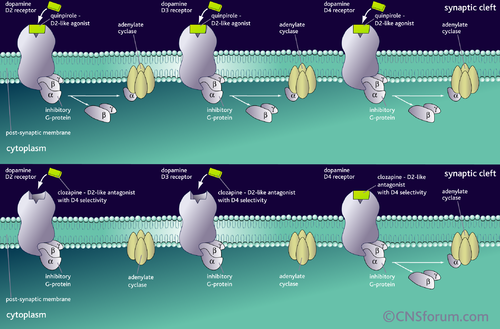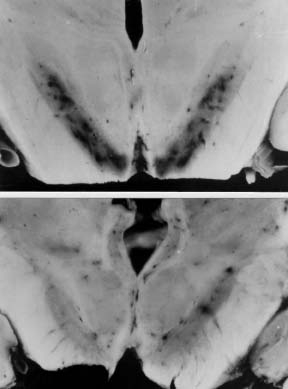Parkinson's
By Katja Shimkin
An Introduction to Parkinson's Disease
Parkinson’s Disease (PD), the second most common neurogenic disorder, is associated primarily with expressed motor dysfunctions. From bradykinesia and awkward gait, to postural instability and hypomimia, PD is conceptualized so classically as an illness affecting body movement that the abnormal psychological or neuropsychological consequences that also distinguish it, remain inconspicuous and, in several instances, vastly underreported. Major Depressive Disorder commonly presents as a comorbidity with PD, and cognitive dysfunctions, particularly in cortical areas pertaining to executive functions such as judgement and planning, are also frequent, and in need of further research. Additionally, investigation into the prevalence of acquiring impulse control-related disorders, or associated conditions such as punding, is now underway, and analyses are reporting these conditions to be common, despite the public’s lack of knowledge regarding them. Fortunately, recent scientific inquiries into these and other detrimental effects of PD have resulted in several discoveries that could set the foundations for novel treatments to increase quality of life for individuals afflicted by PD, and, with increasing treatment options will come increasing public awareness of the vast scope of issues related to this incurable, progressive, degenerative illness.

Currently, the most common generalized treatment for PD is administration of the drug levodopa (L-DOPA.) L-DOPA is a precursor molecule to DA (as well as all neurotransmitters in the catecholamine class) and is necessary for synthesis of the chemical within the presynaptic neuron. Unlike DA, L-DOPA is small enough to permeate the blood-brain barrier, and once through the membrane, the molecule is catalyzed by the enzyme Aromatic-L-amino-acid decarboxylase into DA (Showing Protein Aromatic…, 2015) where an increase in the quantity of the neurotransmitter may mitigate the hypokinesic symptoms characteristic of PD. Since the 1960’s, treatment with the L-DOPA drug has been the standard Parkinson’s treatment, however recent investigations have implicated several other treatment methods as potentially beneficial. Whereas L-DOPA remains an effective treatment, it frequently leads to development of hyperkinesic side effects such as tremors. Additionally, though rare, there are instances in which L-DOPA does not prove to be effective. For these reasons, additional or alternative preventative measures must be investigated. The remainder of this site will discuss several side effects of dopamine treatment medications, and present recent research into possible practical solutions. A recent discovery regarding a novel, preventative vaccine will also be emphasized. The goal is to highlight these potential treatment reforms, as well as to educate readers with regards to less-known clinical presentations associated with Parkinsonian treatment drugs.
A Basic Explanation of Parkinsonian Neurological Deficit
A 2008 review article sponsored by Duke University Medical School describes the pathophysiology of Parkinson’s Disease, emphasizing loss of dopaminergic neurons in two specific regions of the cerebral cortex: the ventral tegmental area (VTA), and the pars compacta. The major production-site of dopamine neurotransmitters, the VTA maintains an extensive neuronal projection circuit, supplying dopamine (DA) to nearly the entire brain, cortex and brainstem. Also described, the pars compacta is one of two structures that comprise the substantia nigra, a cortical region that supplies inhibitory GABA neurons to the striatum. The striatum, or striate cortex, is the source of excitatory dopamine neurons to the movement-regulating brain region called the basal ganglia, and is also a major contributor to the brain’s reward system (Ferrara, 2008).
As a primary binder of excitatory neuroreceptors, dopamine is highly implicated in Parkinsonian pathologies, motor as well as cognitive. In an unaffected brain, DA projections from substantia nigra to the striate are abundant. PD, however, is an illness predominantly induced by degeneration of such projections. Because the striate supplies the movement-controlling basal ganglia with DA, a diminished quantity of DA neurons projecting to the striatum effectually diminishes the amount of neurotransmitter reaching the basal ganglia. This accounts for the hypokinesic symptoms frequent in those who suffer from Parkinson’s (i.e. muscle rigidity, difficulties producing self-inspired movements, hypomimia). Additionally, dopaminergic depletion in areas, such as the basal ganglia, related to the brain’s reward system may explain the biochemical aspect of much-elevated depression rates in those diagnosed with the disease (Triarhou, 2015).
repetitive Transcranial Magnetic Stimulation (rTMS)
Punding, a seemingly rare though perhaps merely underreported side effect of long-term L-DOPA intake, refers to the incidence of (a) severe, irrepressible, repetitive behavior(s), almost always importantly detrimental to the individual’s physical and social well-being. One case report describes a 68 year-old PD patient who, after medications, developed a compulsive obsession with drumming, playing for hours every day, purchasing a recording studio for his home, and shunning social interactions, food, and sleep, in order to spend more time drumming, thereby avoiding feelings of depression and anxiety. (After six months, his medication was changed and the patient no longer felt controlled by the need to drum to achieve “wellbeing and a feeling of calmness”) (Vitale, 2013). Another study, published in 2013, analyzed the effects of low-frequency repetitive transcranial magnetic stimulation (rTMS) on incidence of the strange side effect of PD medication. Researchers focused efforts specifically on the brain’s dorsolateral prefrontal cortex (DLPFC), comparing effects of left- versus right-hemisphere stimulation (Nardone, 2015). After delivering a series of low-frequency electrical pulses over a period of 32 minutes, to a sample of patients who had demonstrated punding behaviors, it was found that score on a Punding Scale decreased after stimulation over the right, and left DLPFC. After right-sided stimulation, the score remained lower after a second measurement. At third measurement, however, regardless of hemisphere, scores were not significantly different from pre-treatment Punding Scale scores. This demonstrates rTMS over the DLPFC, especially when directed at the right hemisphere, has the potential of minimizing punding behaviors. The authors conclude by suggesting a patient undergoing repeated rTMS for several consecutive days may experience a longer-duration of benefits from the treatment (Nardone, 2015).
A second important finding regarding application of rTMS has to do with cognitive impairment in the form of executive functioning. As stated previously, the prefrontal cortex (PFC) is implicated in top-down processing activities such as decision-making, problem-solving, spatial planning, and the processing of information/creation of strategy. Deficits in such areas also impact a broad range of functions from working memory, to forming strategic decisions, to sequencing actions (Srovnalova, 2012). Based on the knowledge that information related to spacial orientation is regulated by the dorsolateral PFC, a team of researchers conducted a study applying short bursts of high-frequency rTMS over the DLPFC, measuring performance on an executive decision-making/spatial orientation task immediately before, and immediately after, stimulation. The team concluded rTMS applied to the right side of the DLPFC resulted in significant improvement in the task. This indicated statistically relevant improvements in planning, strategy, and spatial orientation in the sample of Parkinson’s-afflicted test subjects (Srovnalova, 2012). Recall the previous study also reported outcomes of rTMS over the right DLPFC, noting significant reductions in punding behaviors (Nardone, 2015). Whereas the first study cited multiple sessions of rTMS as potentially most beneficial to reducing punding behaviors, this second publication asserted the possibility of longer duration of improvements, but did not qualify this by indicating the necessity of multiple consecutive exposures (Srovnalova, 2012).
Further research into the application of rTMS is needed, in terms of its potential uses, and the economic possibilities for its implementation outside the experimental setting, but, for the time being, there seems a strong basis on which future studies may build: that rTMS has clearly-demonstrated potential to decrease symptoms of PD, and side effects of medications administered to treat it. Importantly, decreases in these symptoms may lead to vast improvements in the every-day lives of PD patients, with regards to social functioning, personal wellbeing, and maintenance of cognitive capabilities.
Antipsychotics

Include some current research, with at least one figure showing data.
Preventative Measures: a Microbial Direction
Conclusion
References
Authored for BIOL 291.00 Health Service and Biomedical Analysis, taught by Joan Slonczewski, 2016, Kenyon College.

